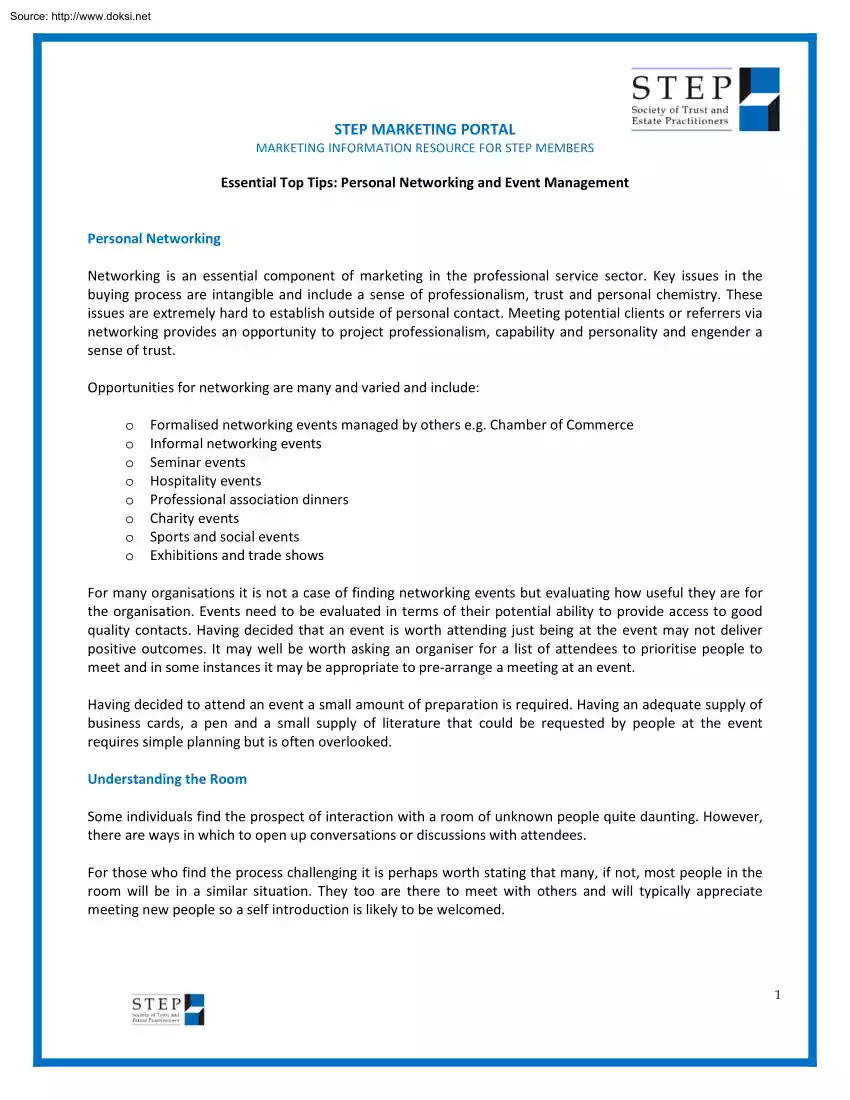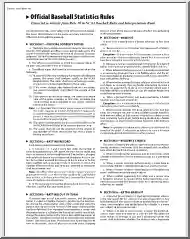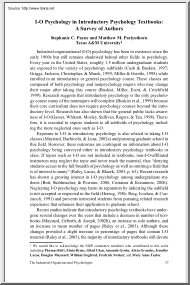Értékelések
Nincs még értékelés. Legyél Te az első!
Mit olvastak a többiek, ha ezzel végeztek?
Tartalmi kivonat
Source: http://www.doksinet STEP MARKETING PORTAL MARKETING INFORMATION RESOURCE FOR STEP MEMBERS Essential Top Tips: Personal Networking and Event Management Personal Networking Networking is an essential component of marketing in the professional service sector. Key issues in the buying process are intangible and include a sense of professionalism, trust and personal chemistry. These issues are extremely hard to establish outside of personal contact. Meeting potential clients or referrers via networking provides an opportunity to project professionalism, capability and personality and engender a sense of trust. Opportunities for networking are many and varied and include: o o o o o o o o Formalised networking events managed by others e.g Chamber of Commerce Informal networking events Seminar events Hospitality events Professional association dinners Charity events Sports and social events Exhibitions and trade shows For many organisations it is not a case of finding networking
events but evaluating how useful they are for the organisation. Events need to be evaluated in terms of their potential ability to provide access to good quality contacts. Having decided that an event is worth attending just being at the event may not deliver positive outcomes. It may well be worth asking an organiser for a list of attendees to prioritise people to meet and in some instances it may be appropriate to pre-arrange a meeting at an event. Having decided to attend an event a small amount of preparation is required. Having an adequate supply of business cards, a pen and a small supply of literature that could be requested by people at the event requires simple planning but is often overlooked. Understanding the Room Some individuals find the prospect of interaction with a room of unknown people quite daunting. However, there are ways in which to open up conversations or discussions with attendees. For those who find the process challenging it is perhaps worth stating that
many, if not, most people in the room will be in a similar situation. They too are there to meet with others and will typically appreciate meeting new people so a self introduction is likely to be welcomed. 1 Source: http://www.doksinet A quick scan of the room should help determine the opportunities to join a group discussion. By looking at clusters of people it is relatively easy to determine which groups are ‘open’ for others to join. The body language of a closely knit group or pairing, is different to that of a group that is open to new people. A group where body posture and physical spacing of people allows for additional people to join a conversation is likely to welcome new people. These groups can be approached with relative ease and at a polite pause in conversation, a simple self introduction to the group should be possible. Having joined the group a series of simple open questions can help in understanding the people, their organisations and their interests. Open
questions also suggest an interest in members of the group and will likely result in reciprocal questions that will allow the attendee to share information about their business and their personal interests. Another useful tool for meeting new people is to identify one or two known contacts and to join a group that they are part of and effectively use the existing contact to introduce the attendee to others. This can even be pre-arranged if there are particular people on a guest list that an attendee may want to meet. The organiser on the day can often assist in facilitating such introductions since it their objective to maximise the value of the event to attendees. Mutuality of Benefit One very useful principle that applies to professional services marketing is that of mutuality of benefit. This mind set is one that is well received in most circumstances. It involves a willingness of an individual or indeed an organisation to attempt to facilitate introductions or opportunities for
others through the contacts of an individual or an organisation. Once understood this becomes a natural part pf doing business It could involve sharing information with others about potential new business opportunities, an offer to introduce people to existing contacts that could benefit the new contact, alerting the new contact to another event that they could benefit from, or an introduction to an existing client or supplier. If an individual or organisation is known for their ability to foster mutually beneficial relationships it will enhance their reputation within the business community and could result in active referral as the individual or business is seen as being ‘useful to know’ by other contacts. Clearly this principle needs to be deployed carefully and in the case of introducing others to clients the existing client must also benefit from the new introduction. Excessive new introductions may also be resented if there is no benefit to it There are networking bodies
(typically breakfast groups) that thrive on a structured approach to facilitated introductions. Care should be taken not to irritate contacts and clients through unwanted new introductions that serve only to make an attendee appear proactive at the breakfast meeting. Having showed a willingness to help anther individual or organisation it is quite likely that others will seek to assist the referring individual or business as a gesture of thanks and goodwill. 2 Source: http://www.doksinet SUMMARY ACTION POINTS FOR PERSONAL NETWORKING 1. 2. 3. 4. 5. Evaluate the potential of an event or a networking group before committing to it. Plan attendance and obtain attendee lists and look for specific introductions. Scan the room to determine which conversations are open to new members. Use open ended questions to stimulate conversation. Seek mutuality of benefit as a means of fostering relationships. Hosting Events In a crowded business calendar it can be difficult to arrange events that
are distinctive and deemed to be worthy to attend. Events in many senses are competitive Clients and contacts have busy agendas and they will have to prioritise what events they will be able to attend and trade off the benefit it will bring with the time commitment required. Target clients need to be convinced that an event is worth attending and the communication of the benefits to the attendee has to be well executed. The benefit could be a business one where new contacts are likely to be made, it could be knowledge based where best practice is explained or it could simply be entertainment. As with other forms of communication the initial invitation will help establish expectations in the minds of the target attendee. If the invitation looks haphazard or unattractive the expectation will be that the event will be similarly unattractive and as such attendance rates will likely be poor. The subject, timing and theming of the event also needs very careful consideration. Diary clashes
can be caused by school holidays, major sporting events and other events. Such clashes are to be avoided The timing of the event during the day needs to be considered in order to maximise attendance. Some prefer breakfast events other evening events but, as a general rule, timings that impact upon the work day should be avoided unless the event has considerable substance. For events where enjoyment is the theme some creativity is useful. There are a plethora of drinks parties and events that key decision makers are invited to and organisers of an event need to consider why their event will be chosen. Some lateral thinking and a degree of creativity are very much appreciated and can dramatically impact on attendance levels. Operational planning for the event should not be left to chance and a detailed checklist of items for action should be agreed well in advance and individuals allocated to specific jobs. This background attention to detail will engender a sense of professionalism at
the event itself. 3 Source: http://www.doksinet SUMMARY ACTION POINTS FOR HOSTING EVENTS 1. 2. 3. 4. 5. 6. Carefully plan the timing of the event. Consider why people would want to attend the event. Ensure invitations to events stand out and attract interest. Compile planning checklists to ensure events run smoothly. Avoid ‘me too’ events that replicate events that have already taken place. As a host actively look to introduce attendees to others at an event. For more information, or to give your feedback on STEP’s Essential Top Tips, please contact the STEP Marketing team: Artillery House (South), 11 – 19 Artillery Row, London, SW1P 1RT, UK +44 (0)20 7340 0500 marketing@step.org 4
events but evaluating how useful they are for the organisation. Events need to be evaluated in terms of their potential ability to provide access to good quality contacts. Having decided that an event is worth attending just being at the event may not deliver positive outcomes. It may well be worth asking an organiser for a list of attendees to prioritise people to meet and in some instances it may be appropriate to pre-arrange a meeting at an event. Having decided to attend an event a small amount of preparation is required. Having an adequate supply of business cards, a pen and a small supply of literature that could be requested by people at the event requires simple planning but is often overlooked. Understanding the Room Some individuals find the prospect of interaction with a room of unknown people quite daunting. However, there are ways in which to open up conversations or discussions with attendees. For those who find the process challenging it is perhaps worth stating that
many, if not, most people in the room will be in a similar situation. They too are there to meet with others and will typically appreciate meeting new people so a self introduction is likely to be welcomed. 1 Source: http://www.doksinet A quick scan of the room should help determine the opportunities to join a group discussion. By looking at clusters of people it is relatively easy to determine which groups are ‘open’ for others to join. The body language of a closely knit group or pairing, is different to that of a group that is open to new people. A group where body posture and physical spacing of people allows for additional people to join a conversation is likely to welcome new people. These groups can be approached with relative ease and at a polite pause in conversation, a simple self introduction to the group should be possible. Having joined the group a series of simple open questions can help in understanding the people, their organisations and their interests. Open
questions also suggest an interest in members of the group and will likely result in reciprocal questions that will allow the attendee to share information about their business and their personal interests. Another useful tool for meeting new people is to identify one or two known contacts and to join a group that they are part of and effectively use the existing contact to introduce the attendee to others. This can even be pre-arranged if there are particular people on a guest list that an attendee may want to meet. The organiser on the day can often assist in facilitating such introductions since it their objective to maximise the value of the event to attendees. Mutuality of Benefit One very useful principle that applies to professional services marketing is that of mutuality of benefit. This mind set is one that is well received in most circumstances. It involves a willingness of an individual or indeed an organisation to attempt to facilitate introductions or opportunities for
others through the contacts of an individual or an organisation. Once understood this becomes a natural part pf doing business It could involve sharing information with others about potential new business opportunities, an offer to introduce people to existing contacts that could benefit the new contact, alerting the new contact to another event that they could benefit from, or an introduction to an existing client or supplier. If an individual or organisation is known for their ability to foster mutually beneficial relationships it will enhance their reputation within the business community and could result in active referral as the individual or business is seen as being ‘useful to know’ by other contacts. Clearly this principle needs to be deployed carefully and in the case of introducing others to clients the existing client must also benefit from the new introduction. Excessive new introductions may also be resented if there is no benefit to it There are networking bodies
(typically breakfast groups) that thrive on a structured approach to facilitated introductions. Care should be taken not to irritate contacts and clients through unwanted new introductions that serve only to make an attendee appear proactive at the breakfast meeting. Having showed a willingness to help anther individual or organisation it is quite likely that others will seek to assist the referring individual or business as a gesture of thanks and goodwill. 2 Source: http://www.doksinet SUMMARY ACTION POINTS FOR PERSONAL NETWORKING 1. 2. 3. 4. 5. Evaluate the potential of an event or a networking group before committing to it. Plan attendance and obtain attendee lists and look for specific introductions. Scan the room to determine which conversations are open to new members. Use open ended questions to stimulate conversation. Seek mutuality of benefit as a means of fostering relationships. Hosting Events In a crowded business calendar it can be difficult to arrange events that
are distinctive and deemed to be worthy to attend. Events in many senses are competitive Clients and contacts have busy agendas and they will have to prioritise what events they will be able to attend and trade off the benefit it will bring with the time commitment required. Target clients need to be convinced that an event is worth attending and the communication of the benefits to the attendee has to be well executed. The benefit could be a business one where new contacts are likely to be made, it could be knowledge based where best practice is explained or it could simply be entertainment. As with other forms of communication the initial invitation will help establish expectations in the minds of the target attendee. If the invitation looks haphazard or unattractive the expectation will be that the event will be similarly unattractive and as such attendance rates will likely be poor. The subject, timing and theming of the event also needs very careful consideration. Diary clashes
can be caused by school holidays, major sporting events and other events. Such clashes are to be avoided The timing of the event during the day needs to be considered in order to maximise attendance. Some prefer breakfast events other evening events but, as a general rule, timings that impact upon the work day should be avoided unless the event has considerable substance. For events where enjoyment is the theme some creativity is useful. There are a plethora of drinks parties and events that key decision makers are invited to and organisers of an event need to consider why their event will be chosen. Some lateral thinking and a degree of creativity are very much appreciated and can dramatically impact on attendance levels. Operational planning for the event should not be left to chance and a detailed checklist of items for action should be agreed well in advance and individuals allocated to specific jobs. This background attention to detail will engender a sense of professionalism at
the event itself. 3 Source: http://www.doksinet SUMMARY ACTION POINTS FOR HOSTING EVENTS 1. 2. 3. 4. 5. 6. Carefully plan the timing of the event. Consider why people would want to attend the event. Ensure invitations to events stand out and attract interest. Compile planning checklists to ensure events run smoothly. Avoid ‘me too’ events that replicate events that have already taken place. As a host actively look to introduce attendees to others at an event. For more information, or to give your feedback on STEP’s Essential Top Tips, please contact the STEP Marketing team: Artillery House (South), 11 – 19 Artillery Row, London, SW1P 1RT, UK +44 (0)20 7340 0500 marketing@step.org 4





